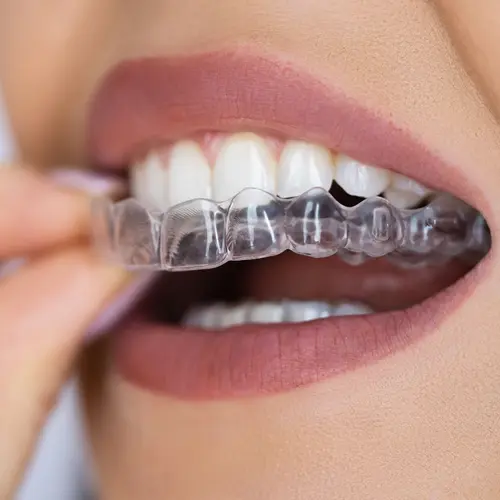If you pass on hot or cold drinks because you know they’ll make your teeth hurt, it may be time to talk to your dentist about the possibility that you have sensitive teeth.
Sometimes other things can aggravate them, too, like sweet and sour foods or even cold air.
To be able to treat these tooth twinges, it helps to know what might be behind them. Once you’ve nailed down the cause, you can find a solution.
Take Care of Your Tooth Enamel
That’s a hard, protective layer that helps your teeth deal with everything you put them through. When it’s gone, nerve endings that cause pain are exposed.
If you have sensitive teeth, it’s possible some of your enamel has worn away.
To prevent or put the brakes on that damage:
Don’t brush too hard. Do you clean your teeth with a heavy hand? You might be taking off more than just plaque. Side-to-side brushing right at the gum line can make your enamel go away faster. You should use a soft-bristled brush and work at a 45-degree angle to your gum to keep enamel clean and strong.
Avoid acidic foods and drinks. Soda, sticky candy, high-sugar carbs -- all of these treats attack enamel. Instead, snack on:
- Fiber-rich fruits and vegetables
- Cheese
- Milk
- Plain yogurt
These will moisten your mouth and help fight acid and bacteria that can eat away at your teeth. Saliva is one way your mouth deals with them.
You can also drink green or black tea or chew sugarless gum. If you do eat something acidic, don’t rush to brush. Wait an hour or so to strengthen before you scrub.
Unclench your teeth. Over time, teeth grinding wears away your enamel. Sometimes, addressing your stress can stop the problem. If that doesn’t work, your dentist can fit you for a splint or a mouth guard.
If the problem is severe, you may need dental work to change your teeth’s position, or a muscle relaxant.
Take a break from bleaching. The quest for pearly whites may cause your pain. Thankfully, sensitivity from bleaching is usually temporary. Talk to your dentist about how the treatment might be affecting you, and whether you should continue it.
Get to the Root of the Problem
Sometimes, tooth sensitivity can be a sign of other issues, like:
Naturally shrinking gums. If you’re over 40, it could be that your gums are showing signs of wear and tear by pulling away from your teeth and uncovering your tooth roots. Those roots don’t have enamel to protect them, so they’re much more sensitive than the rest of your tooth.
Tell your dentist if your gums look like they’re receding. It can be a sign of other problems, like gum disease. Serious cases may need a gum graft. That moves tissue from somewhere else to cover the bare area.
Gum disease. Plaque and tartar buildup on your teeth can make your gums pull back. Sometimes, disease can set in. It can destroy the bony support of your tooth. Don’t smoke. It can lead to gum disease. To treat it, your dentist may do a deep clean of your teeth, called planing or scaling, that scrapes tartar and plaque below the gum line. You could also need medication or surgery to fix the problem.
A cracked tooth or filling: When you break a tooth, the crack can go all the way down to your root. You’ll notice pain when your tooth is cold. How your dentist fixes the crack depends on how deep it goes. If it’s a small crack that ends before your gums start, your dentist can fill it. If it’s below your gum line, your tooth will have to be pulled.
Treatment
Once you’ve found the problem, there are things your dentist can use to help ease your pain, including:
- Toothpaste for sensitive teeth
- Fluoride gel
- Fillings that cover exposed roots
- Sealants
- Desensitizing pastes (not used with a toothbrush) you can get from your dentist
- Mouthguard to protect teeth if you grind
If your case is serious, your dentist might suggest a root canal.
It’s also important not to shy away from dental care because of tooth pain. Ignoring your teeth can make things worse. Brush and floss twice a day to help keep your smile bright and pain-free. And see your dentist for a checkup twice a year.
